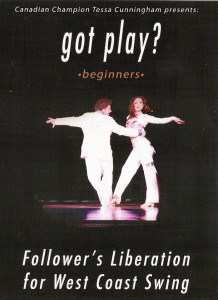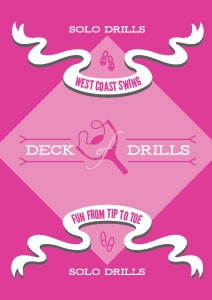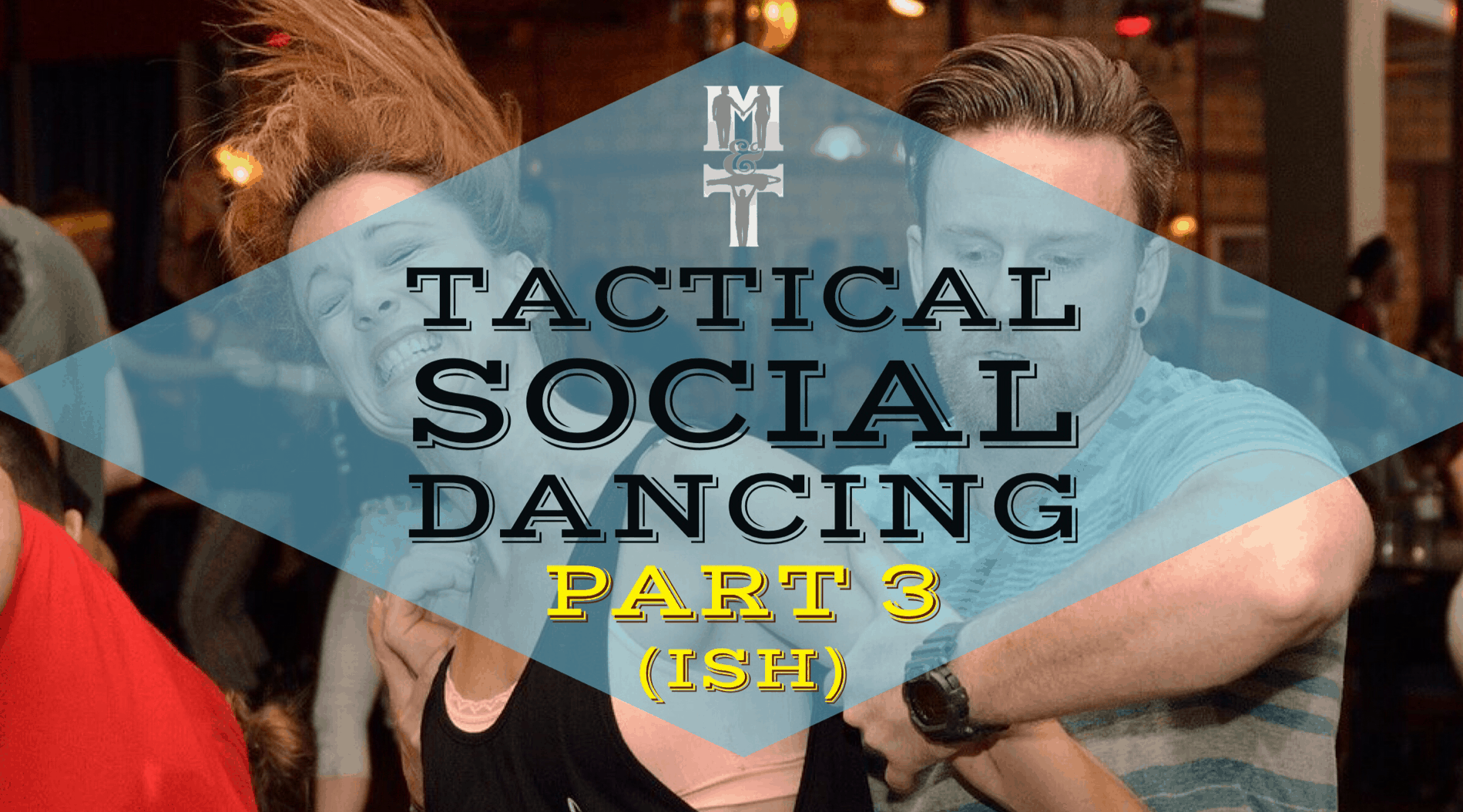No products in the cart.
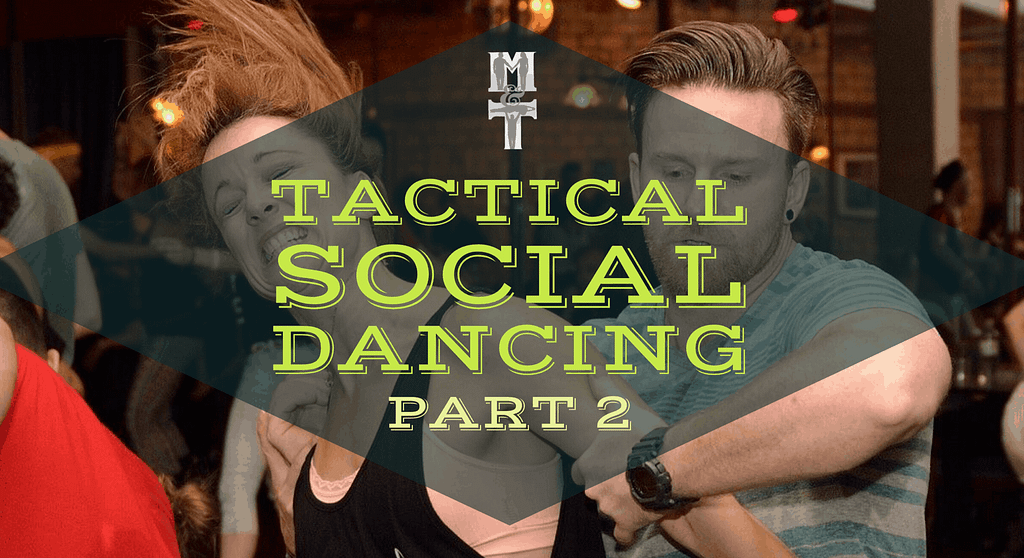
Tactical Social Dancing Part 2
Reading Time: minutes remaining
When it comes to social dancing, many dancers ask us questions like
"How should I handle it when...?" or "What do I do if...?"
These are Tactical questions. In Part 1 of this series, I defined the difference between Techniques, Tactics, and Strategies which are important distinctions to read about to help you get context of this Part 2. I highly recommend reading the introduction here before continuing.
If you had a chance to read it already, something to notice in both articles is how often the words “technique needed” are mentioned.
This is the part where you REALLY should go back and read the intro of Part 1.
What are Tactics?
“What should you do if…”, “What happens when…”, “How can I handle…”, “How do I deal with…” These are all questions that students of all levels batter their teachers with. They are tactical questions – they ask for circumstantial advice, or recommendations for particular situations that have to do with not just the physical side of the dance, but also the social/mental side.
You’ve probably got your own list burning a hole in your pocket, so this is the article series you’ve been waiting for!
Many Tactics are tools to creating a certain effect, but many are more "reactive" - skills to use only in certain circumstances or when your partner does something specific you need to compensate for. Investing in training your compensation skills exponentially pays off in your social dancing, because it helps every dance with every partner feel better.
When we lay out advice like this, it really stands out how many of these tactics need to have techniques attached to them. Even if you are familiar with the tactical advice topics, it is super common to have never heard/collected/absorbed the techniques associated with them.

I hope you use this article as a roadmap or a checklist to go hunting for the techniques you are missing.
How to do partner profiling
The word “profiling” has a negative connotation only in the context of policing, but the word “profile” simply means to summarize and create a snapshot image of someone’s traits, or current status.
The first 15 seconds at the beginning of a dance are chock-full of valuable data. You can assess your partner’s connection, balance, timing, frame, and elasticity all before your first pattern (technique needed). You are creating a profile of your partner’s useable skills (in that moment).
This info should dictate how to handle this partner for the rest of the dance. If you detect that the followers is not very balanced and has a weak frame, plan on avoiding leading multiple spins. If the leader doesn’t stretch you during the starter step, chances are they’re not going to be able to during whips, and you can expect little stretch off anchors too, so prepare your body accordingly (technique needed).
People change, moods change, circumstances change, which means you have to give people the benefit of the doubt and assess each and every dance – don’t “save” the profile for someone – they might present differently the next time you dance.
When your partner doesn’t stretch
Elasticity is a fundamental characteristic of WCS. Together, you and your partner form a machine that needs elasticity to function well (technique needed). If one side of your partnership is slacking (pun intended), it is up to the other partner to make up the difference (technique needed).
Yes, we are all responsible for frame matching, but if your partner is slack, you need to back up to acquire tension. If your partner is rigid, you should be able to “self-boing” (technique needed) to help the team.

Bottom line? There is a metric ton of technique available that will make compensating for this much more comfortable so you won’t feel trapped for 3 minutes. You can find it in the Swing Literacy Dancer Development Program.
How to survive a rough partner
There exists a common myth that followers should relax their connection when faced with a rough (male) leader. (I have never heard a complaint about a rough female leader.)
This dangerous advice is one of the leading causes of injury. Good partnership aims to integrate both partners as one, so the name of the game is “frame matching”.
Followers, you need to reciprocate the connection you are offered (technique needed): If the leader is light, lighten up. If they are strong, tone up to match their strength. Expect it to fluctuate throughout the dance.
If you relax with a strong leader, not only are you refusing to match/reciprocate/connect, but when you disassociate your arm from your core, you put yourself at risk. They will inevitably pull harder in an effort to “feel” you. But if you match their connection, they will not feel the need to try harder to lead you – it will be effortless so they will likely calm down, and if they don’t, at least the dance will be survivable.
Do not, however, “lean back”, or hold your frame tight while hanging your weight back. This will only serve to make you feel heavy, which will prompt them to jerk you harder. Stay agile and responsive (technique needed), allow the slingshot to do the work (technique needed). A strong leader who is pulling you off time is “fixable”, but this requires more advanced techniques. The easiest way to adapt is to abandon your timing and just allow the dance to flow as best you can. The more you try to force it, the more it will feel like a fight.
On the leaders' side, don't fall into the trap of thinking that the solution to dealing with a follower who's too strong requires you to pull harder. if you have a stiff, rigid partner, you need to compensate with elasticity for the team. This is a separate skill from leading, that requires fundamental technique that you might be missing.
Wondering how to handle it when partners hurt you (leader OR followers)? Here's a whole article on exactly why this happens and what to do and say when it does.
How to work with a follower with no frame
Ah, frame…one of the most misunderstood skills in WCS. Followers often do not get thorough enough instruction on frame in the beginning for it to be functional, so the majority of followers (even up to Advanced and AllStar level) are actually to some degree frame-deficient. (technique needed)
But I think most of you are wondering about the more beginner follower who seems to understand inertia and timing, but is a wet noodle when it comes to compressing and turning, amiright?
If you are familiar with our kissing/magnet/lateral connection material from the Swing Literacy Development Method, or if you have studied our video, The 8th Habit, you are already well-equipped to handle this situation.
Right from the first time you touch this follower, make sure to put positive pressure on their hands, not just slack, relaxed handhold (technique needed). This will set the tone for the dance and unconsciously teach them how to listen to you.
This will help a little, but until they learn the rest of their fundamentals, you will need more tactics: Know that this follow will not feel preps or lateral leads on time, so you need to allow more time for them to complete them. Try to lead more from other structure points such as hips and shoulders, which are harder to ignore. (technique needed)
Whatever you do, do not complain, criticize or correct on the dance floor. This will only backfire and reflect badly on you. Suck it up!
How to dance with dancers from “past generations”
Remember, WCS isn’t just as only old as YouTube; it’s a 60+year-old American cultural dance. In North America, it is likely you will run into social dancers who started in the 90’s or early 2000’s.
Because WCS constantly evolves, this means that the dance style/accent looks and feels different now than it did then. But like language, having different accents does not disable you from sharing conversation. Just identify the main differences so you can understand each other and be understood.
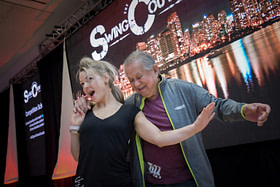
WCS used to be much faster, which meant it was danced closer, in a shorter slot, using more posting, more footwork, and less stretch and body shaping (technique needed). So if you are a from a recent generation (within the past 5-7 years), in order to dance with a partner from an earlier generation, try to adjust by using shorter slots, posting, and footwork (technique needed).
If you are dancing with someone from a more recent generation than you (not necessarily younger in age), understand that they are aiming for more stretch, flow, and body movement. It’s all about listening to each other and managing your expectations.
How to hear a weak/whisper lead
Followers often ask how they can possibly stretch off of a leader who is super light. Remember, elasticity is the name of the game, which requires tension, which requires counterbalance.
You can absolutely stretch yourself (techniques needed) and get counterbalance from every leader – it’s a matter of reciprocation: If they are strong, counterbalance more. If they are weak, counterbalance less (techniques needed). Your normal elastic band should decrease in strength: lighten your tension so you can “hear” their whisper. Don’t expect every leader to speak at the same volume.

How to deal with the obsessive dipper
Followers, we all know “that guy” (it’s almost always a male because most female leaders don’t tend to do weight supports due to size and strength) who likes to dip 17 times during a dance, or maybe he’s the one who thinks it’s a good strategy to brace your skull before slamming you down over his knee.
He should know that a dip is a trust contract that must be earned, and that while dips must be lead and never invited, they should never be forced. But not all leaders get this memo before winging it.
Regardless of the reasons he is over-dipping you, it is your responsibility to speak up. This can be verbal (with a smile): “Whew! I think I’ve hit my quota of dips tonight, thanks!” or physical: reaching your free foot back to brace yourself against him pushing you down (techniques needed).
If he’s a known offender, you can jokingly mention before the dance that you are “playing by Classic division rules tonight: no more than 5 weight supports!”, or seriously gain his compassion by indicating an injury or vertigo episode you are protecting.
How to deal with the self-dipper
Leaders, we all know “that lady” (it’s almost always a female because male followers tend to have more empathy on this topic) who likes to self-lead into dips and drops. You are leading something straightforward and all of a sudden she’s squatting behind your back, expecting you to hold her there until she’s done with her “moment”. 2 projects for you here:
1. Prevention
There are some followers who missed the memo that they are supposed to physically *request* time to play *before* committing their weight to a drop (techniques needed). It’s possible that you might have unintentionally relaxed or strengthened your lead, indicating an invitation. In this case, you need to re-evaulate your leading connection during certain moves (techniques needed).
Some followers missed the memo that dips are NOT invitations – they are to be lead! The leader needs to be physically prepared before the follower gives you their weight! In this case, keep your wits about you and be sure to lead assertively through “openings” they might decide to take advantage of (techniques needed).
2. Reaction
When you are past the point of prevention, you need to go into survival mode. This means bracing yourself and not worrying about aesthetics. In a standard dip where they are throwing themselves down, engage your core and "hug" them against your torso so they can’t descend and pull you off balance. In a drop, engage your core, bend your knees, and offer your second hand or place it on their back to assist. (more techniques available)
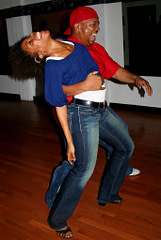
Continue on to Part 3!
Part 3 discusses more about the "social" Tactics of social dancing:
- When your partner tries to teach you on the social floor
- How to ask high demand dancers
- How to get your partner’s attention
- How to increase your chances of a second dance
- How to handle a follower who is a “player”
- How to gracefully decline during a dance
- How to handle “no”
- When the leader accuses you
- How to handle uncomfortable behaviour
Part 1 and Part 2 of this series have garnered a massive response – when I opened up the floor to take suggestions for more tactical questions, people really unloaded! Well, I’m honoured, because that’s exactly what we’re here for. Not just this article series, but ALL the Swing Literacy programs: to fill a need and educate more
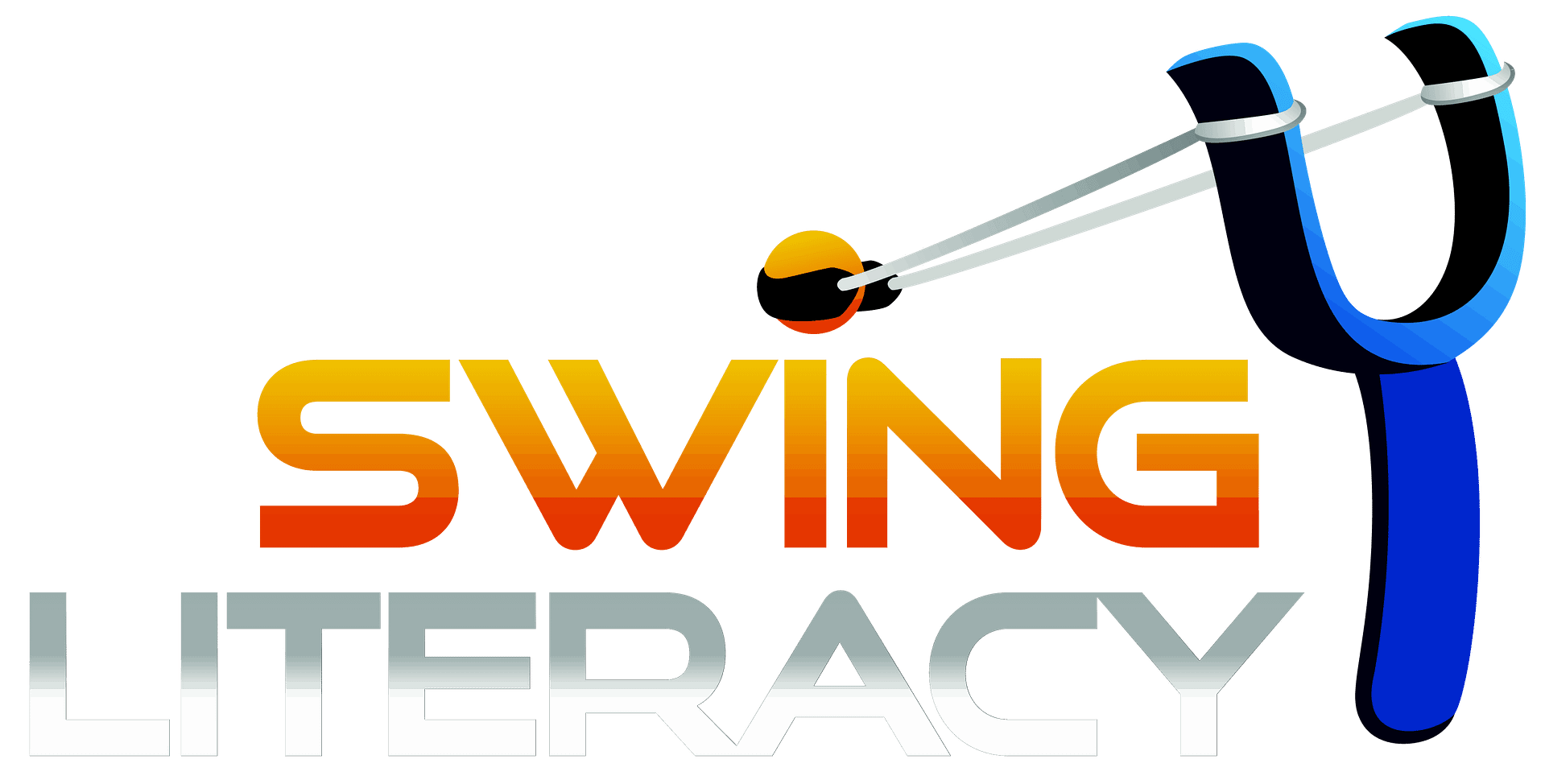
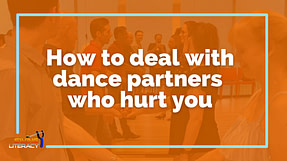
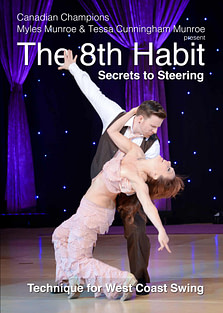

 Last week, I published
Last week, I published 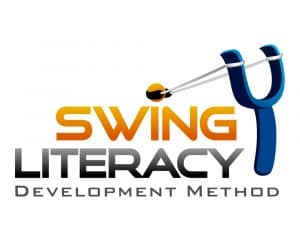
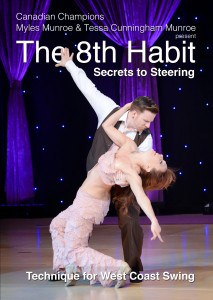 Ah, frame…one of the most misunderstood skills in WCS. Followers often do not get thorough enough instruction on frame in the beginning for it to be functional, so the majority of followers (even up to Advanced and AllStar level) are actually to some degree frame-deficient.
Ah, frame…one of the most misunderstood skills in WCS. Followers often do not get thorough enough instruction on frame in the beginning for it to be functional, so the majority of followers (even up to Advanced and AllStar level) are actually to some degree frame-deficient.